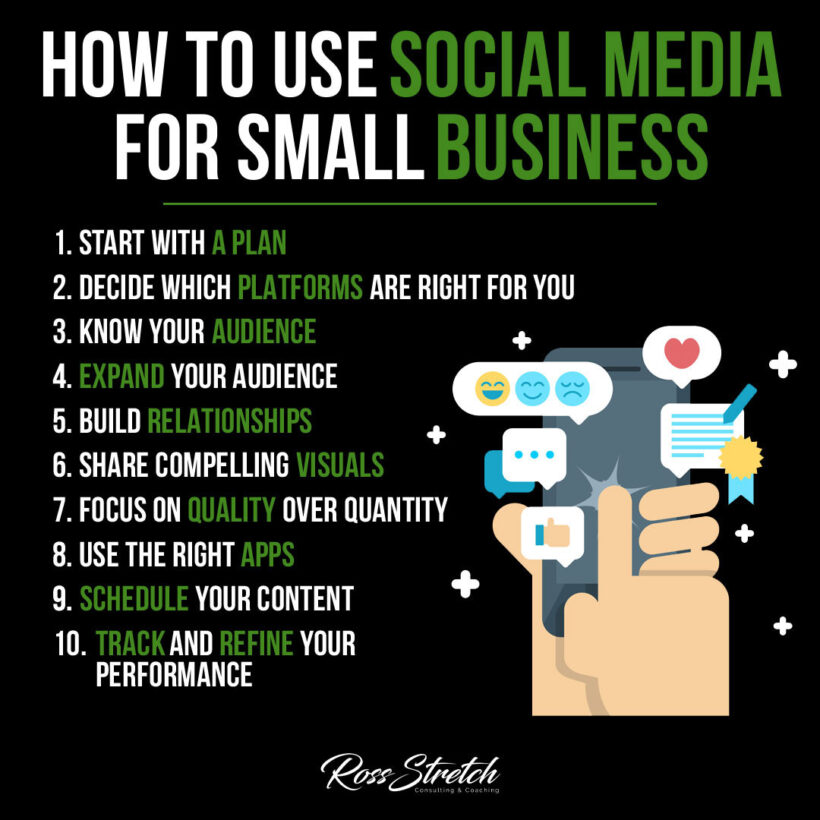Introuction
Social media offers a cost-effective way for small businesses to expand their reach and engage directly with customers. With a structured approach, even small companies can leverage social media to compete with bigger players. Here are 10 crucial steps to maximize your small business’s social media impact.
1. Start with a Plan
Before diving into social media, it’s essential to have a plan. Outline your goals—are you looking to increase brand awareness, drive sales, or engage with your community? Clear objectives will guide your strategy and help measure success.
2. Decide Which Platforms Are Right for You
Not all social media platforms are created equal. Consider your target audience and focus on platforms they frequent. For example, Instagram is excellent for visual brands, while LinkedIn is ideal for B2B connections.
3. Know Your Audience
Understanding your audience’s needs, preferences, and behaviors is key. Use tools like Facebook Insights or Instagram Analytics to gather data on who’s engaging with your content and tailor your messages to resonate with them.
4. Expand Your Audience
After understanding your initial audience, work on expanding it. Use strategies like hashtags, collaborations, and paid ads to reach more potential customers within your niche.
5. Build Relationships
Social media isn’t just about broadcasting messages; it’s about building relationships. Engage with followers by responding to comments, answering questions, and showing appreciation. Building a community around your brand fosters loyalty and trust.
6. Share Compelling Visuals
Visuals grab attention on social media. Invest in high-quality images and graphics to make your posts stand out. Visuals don’t have to be complicated—simple, clear, and on-brand images often work best.
7. Focus on Quality Over Quantity
Posting frequently is important, but quality should never be sacrificed. A few well-thought-out posts each week that provide value to your audience can be more effective than daily low-quality content.
8. Use the Right Apps
Streamline your social media management with apps that help with graphics, scheduling, and analytics. Tools like Canva, Buffer, and Hootsuite can save time and make your content look professional.
9. Schedule Your Content
Consistency is key. Scheduling tools allow you to plan and post content consistently, even if you’re busy. Create a content calendar to keep track of your posting schedule and ensure a steady presence.
10. Track and Refine Your Performance
Use analytics to monitor how your posts perform. Metrics like engagement rate, reach, and follower growth provide insights into what’s working. Regularly assess and refine your strategy based on data to keep improving.
Resources
Helpful Books:
- Jab, Jab, Jab, Right Hook by Gary Vaynerchuk – A guide to crafting effective social media messages.
- Building a StoryBrand by Donald Miller – Learn how to connect with customers and make your brand memorable.
Online Resources:
- Sprout Social’s Guide to Social Media for Small Business – A comprehensive guide for small businesses using social media.
- Hootsuite’s Social Media Strategy – Learn about effective social media strategies and planning.
Using social media effectively requires time, creativity, and consistency. With these steps, small businesses can develop a solid social media presence that builds relationships, engages audiences, and ultimately supports growth.


